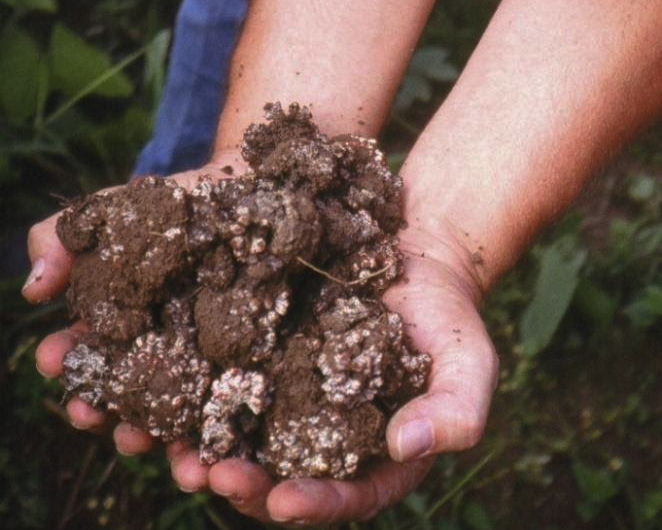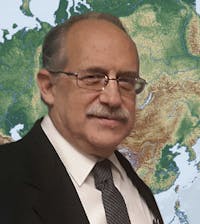Case study 1: the Dogon intermittent shade
- Regenerative Agriculture
- Regenerative Croplands
- Agroecology
- Smallholder Farming
- Sub-Saharan Afrotropics
- Afrotropics Realm
It was November of 2011, during one of the worst droughts ever suffered even in Africa’s Sahel region, just south of the encroaching Sahara Desert. Although it was harvest time, there was not going to be any harvest for hundreds of thousands of farmers all around us. As we drove over 500 km northeast from the country’s capital to some villages near the town of Koro, near the Burkinabe border, virtually every field around us had not a single maize, sorghum or millet plant that would reach your waist.
But as we approached the villages at our destination, we started seeing a strange sight. In every field, there were about 80 to 100 trees per hectare, of a dozen different species. Strangest of all, every one of them was shaped in a funny inverted cone, like huge funnels from a kitchen. Furthermore, we could see the people harvesting and hauling back to the village a bumper crop of millet and half a dozen other crops. Even I, with 50 years’ experience at improving smallholder farmer agriculture in 51 developing nations, had no idea what was going on. Here these people had somehow created a veritable oasis in the middle of a desert.
After we had said our elaborate, obligatory greetings, asking how everything was right down to the people’s cattle, I asked one of the Dogon leaders about those funny, funnel-shaped trees. Good teacher that he was, he started by asking me a question to illustrate his point: “What happens to crops that are planted right under a mango tree, with its dense foliage down close to the ground?”
“The crops die.”
“Why?”
“Because they never get any sunlight.”
“Exactly. But if most of a tree’s leaves are high off the ground, their shadow gradually moves across the field as the sun travels across the sky. That way, all the crops, even those right next to the tree trunk, get some good sunlight at least part of the day. And that way they all grow better.”

Most temperate country soils textbooks show photos of nitrogen-fixing nodules as tiny spheres of about 1 mm in diameter, well-spaced along a root. Obviously, tropical legumes that fix anywhere from 80 to 400 kg/ha of pure nitrogen would require more room than such minuscule nodules could ever provide. This photo shows the nodules from one single mucuna plant grown under ideal conditions, with no competition from other plants. Under normal field conditions, a single plant may produce up to one or two of these “golf balls” of nodules per plant. Even so, they will fix more N in a hectare of soil than that contained in 6 bags of urea, which has the highest content of nitrogen among the synthetic fertilizers. Image credit: Roland Bunch
The Dogon people were using what we now call “intermittent shade.” Crops all over the lowland tropics produce as much as 40% better under a well-managed tree shade than if they have to withstand the full tropical sunlight all day long. This is because they cannot stand the excessive tropical heat, which causes them to stop growing during several hours in the middle of the day. And with global warming, this problem is going to get worse in the near future.
An intermittent shade also reduces both the evaporation of moisture from the farmers’ soil and transpiration from their crops. Crucial moisture is thereby no longer being sucked out of the farmers’ soil. This means that during a drought, crops will produce a whole lot better under intermittent shade than out in constant, direct sunlight.
I had never seen a case of intermittent shade before that November day, because as far as I know after all my wanderings, the Dogon people invented it. This little known “tribe” from the middle of nowhere (very near, in fact, to the proverbial Timbuktu), has given the world an incredibly valuable technology that we will soon begin spreading across the tropics. It will raise yields, but will also provide firewood and fodder so that real forests don’t have to be cut down, thus helping to defend farmers on three continents, as well as all the rest of us, from global warming. Furthermore, the trees drop more of that much-needed organic matter on the soil to enrich it, which sequesters more carbon in the soil. This is in addition to all the carbon that is sequestered in the trees themselves.
And what does all this cost? Just the labor of pruning the trees in that funny shape once a year. Trimming those trees will also save African women the huge job of walking long distances to climb trees to cut firewood and haul it all the way back to the village. All in all, these trees in the fields will save labor and cost nothing to grow. After all, they were already there before many of today’s Dogon people were born. Will other farmers accept this innovation? Well, the Dogon themselves have spread it over an area including between 15 and 20 whole villages, without an extension program in sight.



